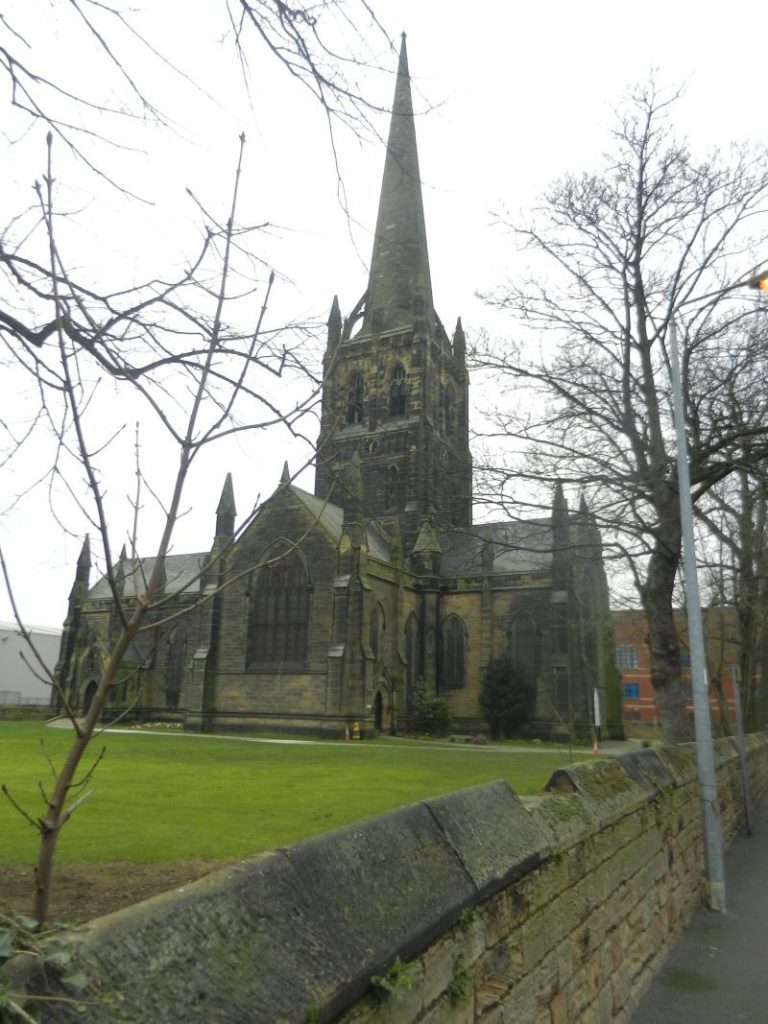
Didn’t get this blog written before Christmas Day so doing now.
The other pre-Christmas outing was to Goole (other to Knaresborough (s.p.b.). The church, dedicated somewhat unusually to St. John the Baptist, is a complete build of the 19th century, a Gothic Revival church with a very prominent spire, visible far and wide across the low lands of the Vale of Ancholme and south-eastern Vale of York. The spire, atop the lofty crossing tower, is supported by flying buttresses and the whole church is worthy of greater recognition than seems to be the case – celebrities ‘100 best churches’ is always, and only, a matter of opinion.
The photo was taken at the southern edge of the churchyard which is a manicured lawn up to the edging stone wall, no sign of any headstones in the churchyard or alongside the perimeter wall, a situation I cannot explain (Goole has a museum above the Library but I am yet to visit).
Modern Goole was initially a product of the Aire and Calder Navigation Company’s investment in creating an inland port in the 1820s, in fact the town-side dock entrance is only a few yards distant from the point where the above photo was taken. The lock(s) connecting the Docks with the River Ouse are further east. Thus Goole Docks are right next to the town centre, indeed the building just visible on the left edge of the photo is a warehouse, unlike those in Hull since the ‘Town Docks’ ceased to be so.
The historic community of Old Goole is sited south of the Docks, south of the mouth of the ‘Dutch River’, the re-routed and canalised old River Don which originally flowed into the Humber Estuary at Trent Falls. Ships sail the flow tide from the Humber to Goole as, historically was the case to Selby and York.
Hook to the north of Goole was/is another old settlement.
Although now part of the East Riding Goole has, in the past, been tossed between local authorities as it is at the corner between Lindsey (historic Lincolnshire), South Yorkshire and East Yorkshire.
The Hull to Doncaster rail-line (Trans-Pennine) has a station in the centre of Goole with a rail-bridge over the River Ouse north-east of the town. Today this bridge is dwarfed by the mighty Ouse Bridge to its north carrying the M62 west and east.